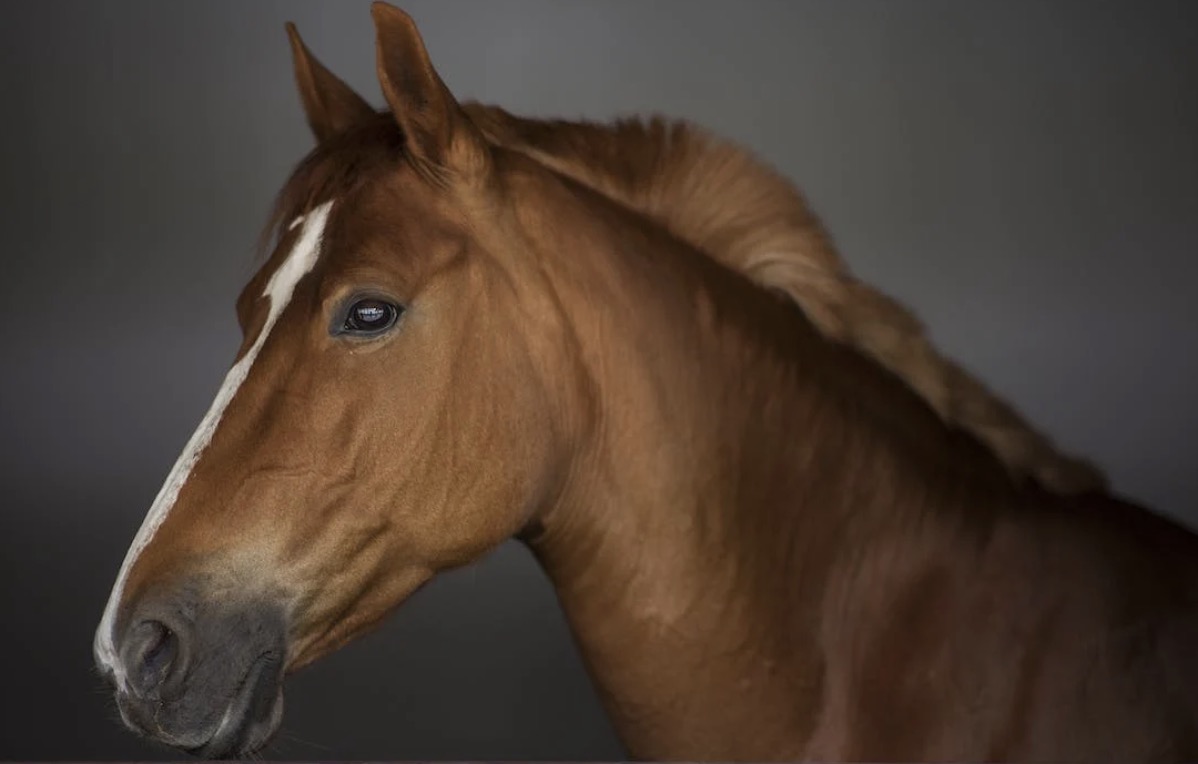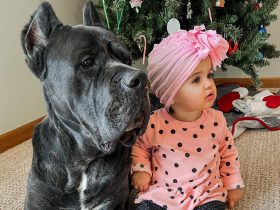Having a horse can be an incredibly rewarding experience. Horses have been domesticated for thousands of years as work animals and companions. When cared for properly, horses can live happy, healthy lives of 25 years or more. Horses have complex physical and psychological needs to thrive. Here are the top horse health tips for keeping your equine friend happy.
Reader's Roadmap
Provide Adequate Shelter and Space
One of the most basic needs for a horse is adequate shelter and room to move around. Horses should have access to a sturdy three-sided shelter or stall to escape from harsh weather and winds. The shelter should be large enough for the horse to turn around and lie down comfortably. There also needs to be well-drained, non-slip flooring such as packed clay, limestone, or rubber mats. An attached paddock or pasture gives your horse more freedom and mental stimulation. Generally, each horse needs at least one acre of pasture. Overcrowding horses increases the risk of injuries and behavioral problems.
Feed a Well-Balanced Diet
Horses are large grazing animals adapted to near-constant foraging. They require a diet high in roughage to support their digestive health. Their teeth also continue growing throughout life and need to be worn down by plant fibers. Ensure your horse always has access to good quality hay and clean water. You’ll also need to supplement with grains and nutrients tailored to your horse’s age, fitness level, and workload. For example, growing young horses and lactating mares need more protein, vitamins, and minerals. Avoid sudden changes in feed and consult an equine nutritionist if needed.
Regular Grooming is Key
Along with providing mental relaxation, regular grooming helps keep your horse’s coat and skin healthy. Use a rubber curry comb in circular motions to dislodge dirt and hair. Follow with a stiff, dandy brush to remove dust from the coat. Then, use a soft finishing brush to add shine and distribute the horse’s natural oils. Be sure to also pick your horse’s hooves daily to remove packed debris. Trimming the bridle path, muzzle, ears, and legs can also give your horse a tidy appearance. Setting aside quality grooming time every day strengthens your relationship and trust with the horse.
Invest in High-Quality Equipment
Investing in high-quality equipment is important for the overall well-being of your horse. Saddle pads, along with bridles, reins, and girths, play an important role in ensuring comfort and safety during rides. LeMieux saddle pad help distribute the rider’s weight evenly, preventing pressure points and discomfort for the horse. You can find sets of saddle pads in a variety of colors and styles that are durable and not only meet your horse’s needs but also complement your personal preferences and sense of style. Quality bridles and reins provide clear communication between rider and horse, promoting better control and responsiveness. Well-made girths help secure the saddle in place, preventing discomfort during movement.
Maintain Proper Hoof Care
A horse’s hooves provide structural support like our own fingernails and bones. But hooves are subject to much more wear and tear. Cracks, chips, improper angles, infections, and abscesses can cause pain and lameness if left unaddressed. That’s why consistent hoof trims every 4 to 8 weeks are so important. A skilled farrier assesses the hooves and shapes them to an appropriate angle for the horse. The bars, sole, and frog area also need occasional cleaning. During trims, the farrier can spot emerging issues. Keeping on top of hoof care goes a long way toward soundness.
Monitor Your Horse’s Weight
Obesity is a growing and underrated health problem in domestic horses. Overfeeding grain combined with inadequate exercise causes many horses to become overweight. Excess fat puts more strain on the joints and digestive system and decreases stamina. Use a weight tape to monitor your horse’s girth and body condition score regularly. Make gradual dietary adjustments as needed to keep your horse at an optimal lean body weight. Consulting a veterinarian can help develop the right fitness plan and diet for your horse’s individual needs. With proper feeding and exercise, your horse can maintain a healthy figure well into old age.
Exercise Regularly
In addition to controlling weight, exercise keeps your horse’s body conditioned and mind happy. Horses naturally travel several miles a day, grazing over varied terrain. Barn confinement leads to frustration, muscle loss, and bone fragility over time. Provide a minimum of 30-60 minutes of exercise per day. This can include riding, lunging, free pasture time, or using an equine walker.
Vaccinate and Deworm
Horses are susceptible to various infectious diseases and parasites. Talk to your vet about the vaccination plan appropriate for your horse and region. Core vaccines often include tetanus, encephalomyelitis, West Nile virus, influenza, rabies, and rhinopneumonitis. Timely deworming every 2-3 months reduces parasitic infections. Rotate between drug classes year-to-year as parasite resistance develops quickly. Fecal tests determine which parasites are active on your property so you can target them for removal. Keeping up with preventative health measures makes illness less likely and less severe when it does occur.
Schedule Regular Veterinary Check-Ups
The adage “prevention is the best medicine” certainly applies to horses. Establish an annual veterinary exam to assess your horse’s overall wellbeing. During visits, the vet listens to the heart, lungs, and intestines and takes a blood sample to establish normal parameters unique to your horse. Senior horses may need biannual vet checks to monitor age-related issues like arthritis, dental disease, or metabolic conditions. Staying on top of immunizations, dental floating, deworming, and diagnostics during routine wellness checks reduces medical crises down the road.
Socialize Your Horse
Horses are innately social herd animals that suffer mentally in isolation. Provide a stable companion animal like another horse, donkey, goat, or cow in adjacent housing. Even housing near other animals helps provide a sense of security. Horses also benefit from positive human interaction. Spend time grooming, handling training, or simply observing your horse daily—signs of psychological distress like weaving, cribbing, aggression, apathy, or self-injury warrant veterinary guidance. Keep boredom and loneliness at bay by housing horses with friends and showing them regular attention.
Keep a Clean Environment
Horses are very vulnerable to respiratory health issues when housed in dirty conditions. The equine respiratory tract is highly specialized to filter massive volumes of dust-laden air when grazing. But this same adaptation makes them prone to chronic lung inflammation when confined. Check for dust, mildew odors, and ammonia fumes, which signal poor ventilation and air quality. Remove soiled bedding promptly to discourage bacterial growth. Disinfect stalls between occupants and eliminate standing water mosquito breeding areas. Establish manure pile removal before flies congregate. With cleanliness measures, horses experience fewer respiratory attacks, skin reactions, and hoof infections.
Understanding Equine Protozoal Myeloencephalitis
Among the most serious health threats facing horses today is equine protozoal myeloencephalitis (EPM). This progressively debilitating neurological disease affects the central nervous system and can result in dangerous incoordination, stumbling, muscle atrophy, and paralysis.
Equine Protozoal Myeloencephalitis is caused by two main protozoa – Sarcocystis neurona or Neospora hughesi. Opossums spread infective protozoa spores through their feces near horses’ feed and water sources. Horses ingest contaminated grains/hay, and the protozoa attack the spinal cord and brainstem.
Early signs of EPM infection are often vague – some excessive stumbling, a tilted neck carriage, or a slight lack of coordination. This slowly advances to obvious muscle wasting, limb paralysis, facial drooping, and an inability to walk or swallow.
Unfortunately, diagnosis in early infection stages is challenging. Veterinarians assess clinical signs and run blood tests to detect antibodies produced by the horse’s immune system when fighting the infection. They may also analyze spinal fluid via collection between neck vertebrae.
The primary course of treatment is an aggressive regimen of two anticoccidial drugs – ponazuril and diclazuril. These effectively target and destroy the protozoal infection in over 60% of cases. Supportive care like physical therapy may be incorporated to regain muscle strength and coordination.
Left untreated, EPM causes dangerous incoordination and recurrent injury and Often leads to a horse needing to be humanely euthanized. While not all cases can be cured, innovative research is improving treatment options – giving hope to owners of horses affected by this condition.
Conclusion
Owning a horse comes with great responsibility. Caring for your horse requires dedication, time, and resources. But the bonds formed made the efforts worthwhile. By tuning into a horse’s comprehensive physical, social, and psychological requirements, owners reap the benefits of a trusting equine partner for potential decades. Always partner with your veterinarian to tailor your horse’s preventative care and exercise programs.







Leave a Reply
View Comments